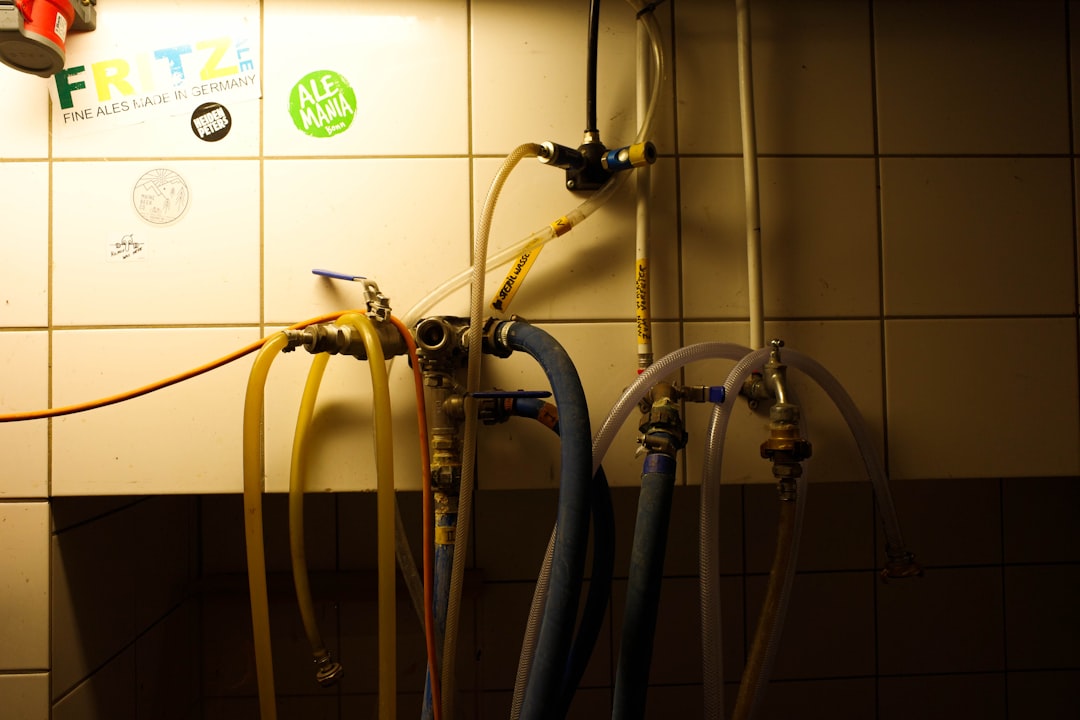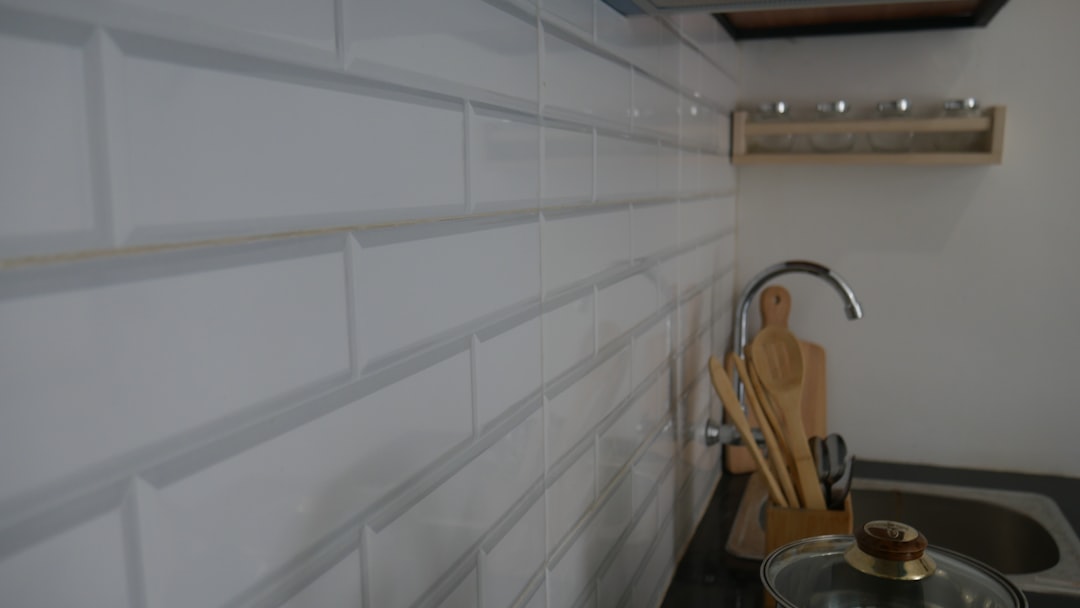QR codes have evolved from a novelty to a strategic powerhouse, bridging offline engagement with online action for duct cleaning services. They offer a low-friction way to boost customer acquisition, increase transparency, and streamline operations without requiring an app download or complex setup. Scans take seconds, destinations can be dynamic, and results are measurable at every step. For HVAC teams, see HVAC marketing strategies.
For duct cleaning providers, QR codes turn everyday assets into digital gateways. By placing scannable codes on flyers, invoices, service vehicles, and equipment, companies can simplify bookings, share safety and certification details, and collect Google reviews with minimal effort. The result is a connected customer experience from the front door to the final invoice.
As competition grows and buyers expect quick, digital-first interactions, QR-driven strategies help capture high-intent demand that would otherwise go untracked. With proper planning and analytics, QR campaigns enhance marketing ROI and operational efficiency while improving customer satisfaction for both residential and commercial clients.
How to Achieve Customer Acquisition and Engagement in Duct Cleaning Services Using QR Codes: A Step-by-Step Guide

Duct cleaning providers often miss high-value prospects who interact with offline materials but never convert digitally. Printed brochures, paper estimate forms, phone-only booking, and static business cards are difficult to track and time-consuming to manage. These analog processes create blind spots and slow down follow-up at the very moment interest is highest.
Modern QR code workflows bridge that gap by connecting physical touchpoints to actionable online journeys. When a homeowner scans a door hanger to schedule a quote or a property manager scans a truck wrap to view credentials, you shorten the path to conversion and capture valuable intent data. The payoff is faster appointment scheduling, higher quote volume, and stronger engagement with maintenance education and safety content.
Here is how to approach customer acquisition and engagement with purpose:
- Deploy QR-powered use cases that match your goals: Launch scannable booking forms, instant quote estimators, and review collection flows on assets that already reach your audience such as invoices, yard signs, vehicle wraps, and community mailers via direct mail.
- Define success metrics that prove impact: Track scans to form starts, form completes to booked appointments, and appointments to revenue. Ground your reporting in solid revenue attribution.
- Design for context and intent: Use strong calls to action like Scan for Instant Quote or Scan to Verify Technician Credentials. Ensure contrast, size, and placement support scanning at a distance or on the move, for example on trucks or job-site signage. For more tips, see QR codes in marketing.
- Replace manual workflows with digital steps: Shift from phone tag to self-serve booking pages, from paper review cards to one-tap links, and from static brochures to dynamic content you can update without reprinting.
- Leverage tracking tools to close the loop: Use platforms like Sona QR to analyze scan volume, location, and device type. Connect results to CRM records to speed up lead follow-up and measure revenue contribution.
Companies that move beyond paper-only approaches reduce administrative work, respond to leads in minutes, and adapt quickly to customer needs. Integrating QR code management with your CRM and marketing automation ensures that every scan triggers the right next step. See Sona with HubSpot.
Why QR Codes Matter for Duct Cleaning Services

The duct cleaning industry depends heavily on physical presence and local awareness: trucks on the road, yard signs, door hangers, mailers, and invoices handed over at the end of a job. Without a way to turn those moments into measurable digital actions, providers struggle to see what works and miss chances to engage when interest peaks.
QR codes solve this by making each asset interactive and trackable. With a single scan, a homeowner can book a visit, read air quality tips, verify NADCA membership, or leave a review. For your team, each scan becomes a data point that informs targeting, follow-up, and budget allocation.
- Close offline-to-online gaps: Add QR codes to appointment cards, job-site signage, and truck wraps so prospects can take immediate action instead of saving a URL for later.
- Deliver speed and simplicity: Scanning takes seconds and requires no app download. That matters for time-pressed facility managers and homeowners with competing priorities.
- Update messages dynamically: Use dynamic QR codes to swap landing pages after printing. Promote seasonal offers in winter, highlight dryer vent cleaning in spring, or pivot messaging during allergy season.
- Unlock real attribution: QR scans capture channel, location, and timing. Tie those signals to quotes, bookings, and revenue to see which flyers, neighborhoods, or vehicles are driving growth. Learn more in this offline attribution guide.
- Scale cost efficiently: QR codes are inexpensive to create and deploy. Turn every flyer, invoice, magnet, and equipment sticker into a conversion funnel without large media buys.
When every physical touchpoint can trigger a digital outcome, you gain the visibility to improve campaigns and the agility to meet customers where they are.
Common QR Code Formats for Duct Cleaning Services Use Cases
Different moments call for different QR experiences. In duct cleaning, a mix of formats lets you handle everything from first contact to post-service follow-up.
- Web links: Send scanners to booking pages, instant quote forms, service area maps, or educational hubs. Ideal for vehicle wraps, door hangers, and job-site signage.
- vCards: Let property managers or HOA board members save your sales rep’s contact details instantly. Useful on business cards and trade show materials, use vCard QR.
- SMS or email pre-fills: Auto-create a message like Requesting a duct cleaning estimate at 123 Main St or Need emergency dryer vent service. Great for commercial facility stickers and equipment tags; see QR for SMS.
- Forms: Route to pre-service questionnaires, compliance checks, or maintenance sign-offs. Helpful for commercial contracts where documentation matters; try Google Forms QR.
- App downloads: If you have a customer portal or maintenance reminder app, direct to the correct store based on device. Best for recurring service clients.
- Wi-Fi access: Less common, but useful at your booth during events or in a showroom to encourage scanning demos without barriers.
Dynamic QR capabilities are especially valuable. With Sona QR, you can change destinations over time, A/B test offers, and route scans by device or location to the most relevant experience.
Where to Find Growth Opportunities

Growth often leaks out of the funnel when high-intent prospects encounter your brand offline but cannot easily respond in the moment. Strategic placements ensure that every sightline and touchpoint invites action and feeds your pipeline.
Target high-visibility and high-intent surfaces:
- Service vehicles: Wrap trucks and vans with large, high-contrast QR codes positioned near handles or rear doors. Use clear CTAs like Scan for Instant Quote or Check Credentials to build trust on the spot.
- Direct mail flyers: Include unique QR codes per neighborhood, service type, or discount. Measure response by postal area and optimize future drops based on scan rate and bookings. For creative, try a duct cleaning flyer template.
- Job-site signage and yard signs: Let neighbors scan to learn what you are doing, view before-and-after photos, and request a quote. Add service radius and expected job duration for credibility. For placements, see banners.
- Invoices and receipts: Prompt satisfied customers to leave a review, refer a friend, or schedule their next service. Connect to loyalty incentives or giveaways with one tap.
- Equipment and access stickers: Place QR tags on air handlers or dryer vents that link to filter sizes, last service date, and one-scan rebooking options. For commercial buildings, include emergency contact workflows using stickers and labels.
By focusing on placements that capture intent at the moment it surfaces, you ensure no opportunity goes untouched and every scan feeds back into your marketing and operations systems.
Use Cases for QR Codes in Duct Cleaning Services

QR codes can enhance acquisition, trust, and retention across the customer lifecycle. The most effective deployments align the destination with the physical context and the user’s intent.
- Instant quote requests: Place QR codes on vehicles, door hangers, and community mailers that open mobile-friendly quote forms. Result: more leads, faster than phone-based workflows, with higher completion rates on smartphones. Consider a ready-made QR order form.
- Service verification and review capture: Add QR codes to invoices and service stickers that confirm technician identity, certifications, and job scope. Result: increased trust at handoff and more verified reviews while the experience is fresh.
- Educational content access: Use QR codes on ads or maintenance reminders to link to videos and articles on indoor air quality, filter replacement, and dryer vent safety. Result: better informed customers and higher uptake for preventive services; see QR codes in marketing.
These use cases create a connected pathway from awareness to conversion to advocacy. They also generate measurable signals that help you retarget intelligently and forecast demand by neighborhood, season, and service type.
How to Build High-Value Audiences for Retargeting with QR Code Campaigns
Each scan reveals an intent signal. By deploying multiple QR codes across placements and journeys, you can automatically segment audiences and personalize follow-up.
Start by mapping your funnel and tagging codes accordingly:
- Create unique QR codes for funnel stages: Use one set for awareness on truck wraps and yard signs, another for consideration on brochures and neighborhood flyers, and a third for conversion on coupons, limited-time offers, or scheduling pages. Each scan lands in a stage-specific segment.
- Tag audiences by service interest and urgency: Distinguish residential duct cleaning, commercial multi-site contracts, dryer vent cleaning, or emergency requests. Assign labels to each QR scan so your CRM can trigger the right nurture.
- Incorporate scan context: Track location type and timing, such as apartment complex versus single-family neighborhood, weekend daylight scans versus weekday work-hour scans, post-service review scans versus pre-service inquiries.
- Feed data into your CRM and ad platforms: With Sona QR, sync scan events to HubSpot or Salesforce. Build custom audiences in Meta, Google, or LinkedIn for prospecting and retargeting based on real-world engagement. For paid media, use this intent-driven retargeting playbook.
For duct cleaning, helpful audience distinctions include homeowners versus property managers, routine maintenance seekers versus urgent dryer vent calls, and allergy season content viewers versus off-season browsers. This nuance enables relevant messaging and smarter budget allocation.
Integrating QR Codes Into Your Multi-Channel Marketing Mix
QR codes are the connective tissue across print, digital, and in-person interactions. When integrated correctly, they provide real-time engagement opportunities and unify campaign measurement across channels that were once difficult to track.
Here is how they enhance your broader strategy:
- Brochures and print collateral: Add QR codes that drive readers to booking pages, before-and-after galleries, or indoor air quality calculators. Each scan shows which handouts and neighborhoods perform; see brochures.
- Social media and UGC campaigns: Encourage customers to share results by scanning a post-service card that opens a guided photo submission or review flow. Build retargeting audiences based on scan behavior and content engagement; a simple social flyer can help kickstart creative.
- Direct mail: Make postcards measurable with personalized QR links tied to local promotions. Track who scans, when, and how many convert to quotes or appointments.
- Video, TV, and digital signage: Let viewers scan on-screen codes to claim seasonal discounts or schedule free inspections. Reduce friction and capture attribution that phone numbers or URLs cannot provide using TV commercials or digital signage.
- Conferences, trade shows, and community events: Use QR codes on booth signage, table tents, and technician badges. Offer instant demos, equipment explanations, and appointment scheduling. Tag scans by event to inform future sponsorship choices.
QR codes serve as the offline onramp to your digital marketing engine. Centralize management with Sona QR to monitor performance in one dashboard and sync scan data to your CRM and ad accounts for immediate follow-up.
Step-by-Step QR Campaign Execution Checklist
A structured rollout increases your odds of success. Use these steps to plan, launch, and optimize.
Step 1: Choose the Use Case
Decide what outcome you want from each QR code before you print or deploy it. Align the destination with a clear customer action and a measurable business goal.
- Clarify the goal: Examples include booking an appointment, requesting a quote, leaving a review, or downloading a maintenance plan.
- Match use case to audience: For homeowners, emphasize convenience and savings. For property managers, focus on compliance, documentation, and service-level reliability.
- Select one primary action: Avoid crowded landing pages. One page, one purpose, one CTA.
Step 2: Pick a QR Code Type
Your QR format determines flexibility and data capture. Choose static for fixed content and dynamic for evolving campaigns and analytics.
- Static QR codes: Best for permanent information like a technician vCard or an evergreen educational PDF.
- Dynamic QR codes: Best for campaigns, seasonal offers, and all placements where you want to track scans, A/B test destinations, or update content without reprinting. See product overview.
- Plan for scale: If you need reporting by vehicle, neighborhood, or campaign, dynamic is the safer choice.
Step 3: Design and Test the Code
Design impacts scan rates as much as the offer. Make scanning effortless and build trust at a glance.
- Brand and frame: Add your logo, brand colors, and a clear callout box with a CTA like Scan to Book Now or Scan to Verify Credentials.
- Ensure scannability: Use high contrast, adequate white space, and a minimum size appropriate to distance. Test on glossy and matte finishes under different lighting.
- Validate the flow: Scan with multiple devices across iOS and Android. Check load times, form logic, and accessibility, including alt text and readable fonts.
Step 4: Deploy Across High-Impact Channels
Place QR codes where they can be seen and scanned in the context of the desired action.
- Vehicles and signs: Position codes where people can safely scan, for example at curbside when the truck is parked. Use short, benefit-driven CTAs.
- Direct mail and door hangers: Pair personalized offers with unique codes so you can tie response to neighborhoods or property types. For assets, consider a printable flyer.
- Invoices and equipment stickers: Trigger reviews, referrals, or rebooking. For commercial sites, link to documentation and emergency contact workflows.
Step 5: Track and Optimize
Measurement turns scans into strategy. Monitor performance, test new variations, and double down on what works.
- Instrument analytics: Use Sona QR to track scans by device, time, and location. Append UTM parameters for downstream analytics.
- Watch conversion funnels: Identify drop-off points from scan to form start to appointment. Test new CTAs, landing page layouts, and incentives.
- Iterate continuously: Retire underperforming placements, scale winners, and update dynamic destinations based on seasonality and service demand.
Tracking and Analytics: From Scan to Revenue
Attribution is the difference between guessing and knowing. Duct cleaning companies invest in trucks, wraps, mailers, and community presence, yet traditional tracking rarely connects those investments to bookings and revenue. QR codes change that dynamic by creating a measurable bridge between offline impact and online outcomes.
Start with clean data capture, then follow the signal from scan to sale. Centralize tracking in a platform like Sona QR and connect to Sona.com for advanced attribution. Sona is an AI-powered marketing platform that turns first-party data into revenue through automated attribution, data activation, and workflow orchestration. The goal is to link the first scan to the final invoice and everything in between.
- Track every scan: Capture time, device type, location, and campaign source with minimal setup.
- Measure engagement by context: See which vehicles, neighborhoods, events, or flyers drive the most qualified scans and conversions.
- Respond in real time: Trigger alerts for high-intent scans, like emergency dryer vent requests, so dispatch can respond immediately.
- Sync with your CRM: Enrich contacts in HubSpot or Salesforce with scan metadata. Route hot leads to sales, send nurture sequences to curious but not ready prospects.
- Attribute revenue: Use Sona.com to connect anonymous scans to known buyers via identity resolution and account identification. Understand how QR interactions influence pipeline and closed deals.
- Unify fragmented touchpoints: Tie QR scans to website visits, email clicks, and ad engagements. Learn how multi-touch attribution shapes performance across channels.
With rigorous analytics, QR codes become a core performance channel. You will know where to place the next thousand door hangers, which truck wrap performs best, and which incentives drive high-margin bookings.
Tips to Expand QR Success in Duct Cleaning Services
A few best practices can dramatically improve scan rates, conversions, and downstream revenue. Focus on matching the code, the context, and the CTA to the user’s intent.
- Assign unique codes to each asset: Track performance by truck, flyer version, neighborhood, or invoice type. You will quickly learn which creative and placements pay off.
- Add UTM parameters to every destination: Preserve source and medium details inside your analytics platform. Consistent tagging enables clean reporting and smarter optimization.
- Automate follow-up after every scan: Trigger SMS confirmations, email reminders, or ad retargeting when someone scans but does not book. Use scan intent to personalize the next step with Sona QR.
- Educate staff and customers: Train technicians to point out QR codes for rebooking, verification, and reviews. Tell customers exactly what they get by scanning: a discount, a next service date reminder, or proof of certification.
Creative deployment examples that work in duct cleaning include a QR code on filter replacement stickers that opens a personalized reordering page, and a QR on invoices that lets customers schedule a discounted dryer vent cleaning within 60 days. These small moments add up to measurable lift in retention and cross-sell. For more tactics, explore marketing ideas.
Real-World Examples and Creative Inspiration

Real deployments show how QR codes convert offline attention into booked work and lasting relationships. While results vary by market and execution, patterns are clear.
- Dynamic offers on mailers: A regional provider used dynamic QR codes on seasonal mailers, rotating destinations between instant quotes and limited-time discounts. Over a quarter, the team reported roughly a 40 percent lift in scan-driven leads and a 22 percent increase in bookings for higher-margin services like dryer vent cleaning.
- vCard business cards at trade shows: Technicians and sales reps handed out business cards with vCard QR codes at property management expos. Contacts saved directly to phones synchronized with the company’s CRM for immediate follow-up and appointment setting.
- Apartment and HOA campaigns: QR codes placed in laundry rooms and community bulletin boards linked to dryer vent safety tips and bulk booking options. Scans led to recurring service contracts and improved safety compliance messaging.
- Job-site storytelling: Yard signs with QR codes pointed to a gallery of before-and-after photos and a credential verification page. Neighbors scanned out of curiosity, consumed educational content, and scheduled inspections within days.
Each of these examples turns a passive surface into an active channel. They also share a common thread: a clear CTA, a relevant destination, and integrated tracking that connects scans to outcomes.
Expert Tips and Common Pitfalls
Mastering QR deployment means sweating the details. Small missteps can cost scans, while thoughtful design and process can lift results substantially.
- Use benefit-driven CTAs: Phrases like Scan for On-the-Spot Savings, Scan to Verify Your Technician, or Discover Air Duct Cleaning Truths explain the value of scanning and increase engagement.
- Avoid poor contrast and tiny codes: Low contrast, glossy glare, and undersized codes reduce scannability. Follow minimum size guidelines and test in real lighting conditions for each placement.
- Keep destinations fresh: Dynamic QR codes only pay off if you update offers and content regularly. Rotate seasonal promotions, keep certification pages current, and refresh education assets.
- Align with standards and compliance: Ensure QR-linked information accurately reflects licensing, insurance, NADCA membership, and safety protocols. Clear, credible information builds trust and reduces friction.
When teams address these details, QR codes become dependable building blocks in both marketing and operations.
Final Thoughts
QR codes are not just shortcuts; they are a strategy for duct cleaning businesses intent on turning every physical surface into a digital entry point and every moment of interest into a moment of action. By placing scannable touchpoints where customers already interact with your brand, you reduce friction, gather data, and drive measurable outcomes.
- Instant engagement across assets: Trucks, flyers, invoices, yard signs, and equipment stickers become conversion channels in seconds.
- A connected journey: Prospects move smoothly from awareness to booking to verified service and review, with clear proof of value at each step.
- Actionable data for growth: Every scan is a signal. With the right tools, it becomes attribution, automation, and revenue.
With Sona QR, you can generate and manage dynamic codes, track performance in real time, and sync scan activity to your CRM. Pair it with Sona.com to attribute revenue and map the complete buyer journey. Start with a single use case like Scan to Book on invoices or door hangers, then expand to vehicles, yard signs, and equipment tags as you learn. The sooner you connect offline engagement to digital visibility, the faster you will capture demand, improve customer satisfaction, and grow sustainably. Start creating QR codes for free.
Conclusion
QR codes have revolutionized duct cleaning services by transforming how providers connect with customers and streamline service access. They enable instant, mobile-friendly interactions that simplify appointment scheduling, provide service details, and gather real-time feedback—turning traditional outreach into a dynamic, measurable growth channel. Imagine customers effortlessly accessing your service information or exclusive offers with a single scan, boosting both convenience and engagement.
With Sona QR, you gain the power to create dynamic, trackable QR codes that update instantly without the need for reprinting. This means you can optimize your marketing campaigns on the fly, track customer interactions down to each scan, and directly link engagement to revenue growth. No missed opportunities, just smarter customer acquisition and enhanced service experiences tailored to your duct cleaning business.
Start for free with Sona QR today and watch every scan transform into a new customer connection, a booked appointment, or a loyal client.
FAQ
How can QR codes improve customer acquisition for duct cleaning services?
QR codes connect offline assets like flyers, vehicles, and invoices to digital actions such as booking forms and review collection, enabling faster appointment scheduling, higher quote volume, and better engagement.
What types of QR code formats are useful for duct cleaning service providers?
Common QR code formats include web links for booking and education, vCards for contact sharing, SMS or email pre-fills for inquiries, forms for compliance, app downloads for recurring services, and Wi-Fi access for events.
Where should duct cleaning companies place QR codes to maximize engagement?
High-impact placements include service vehicles, direct mail flyers, job-site signage, invoices, and equipment stickers to capture intent when customers encounter the brand.
What are the benefits of using dynamic QR codes in duct cleaning marketing?
Dynamic QR codes allow updating landing pages without reprinting, enable A/B testing, track scan data by location or device, and support seasonal or service-specific promotions.
How do QR codes help measure the effectiveness of duct cleaning marketing efforts?
QR codes capture scan time, location, device type, and campaign source which can be connected to bookings and revenue via platforms like Sona QR for accurate offline-to-online attribution.
What are best practices for designing QR codes for duct cleaning services?
Use benefit-driven calls to action, ensure high contrast and adequate size, test scanability on multiple devices, and brand codes with logos and clear instructions.
How can duct cleaning companies use QR codes to collect customer reviews?
Placing QR codes on invoices, service stickers, or receipts can prompt customers to leave verified reviews immediately after service, increasing trust and reputation.
What role do QR codes play in customer retention for duct cleaning services?
QR codes on filter replacement stickers or invoices can link customers to reordering pages or schedule discounted follow-up services, enhancing retention and cross-selling.
How do QR codes integrate with CRM and marketing automation systems in duct cleaning businesses?
Scan data from QR codes can sync with CRM platforms like HubSpot or Salesforce to enrich contact profiles, trigger follow-ups, and support targeted retargeting campaigns.
What steps should duct cleaning providers follow to launch a successful QR code campaign?
Identify clear goals and use cases, select static or dynamic QR codes, design with user intent in mind, deploy codes on relevant channels, and track and optimize performance continuously.





















